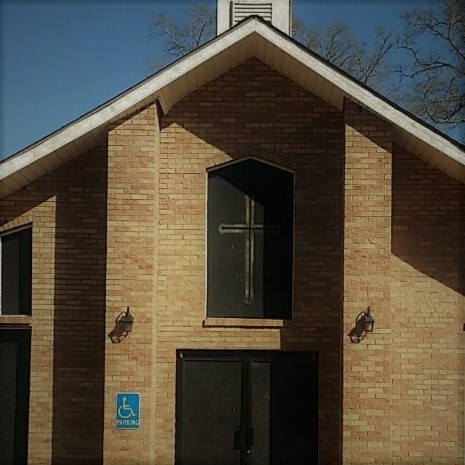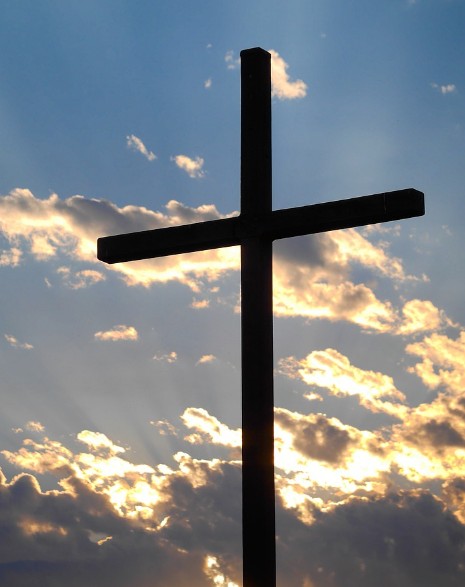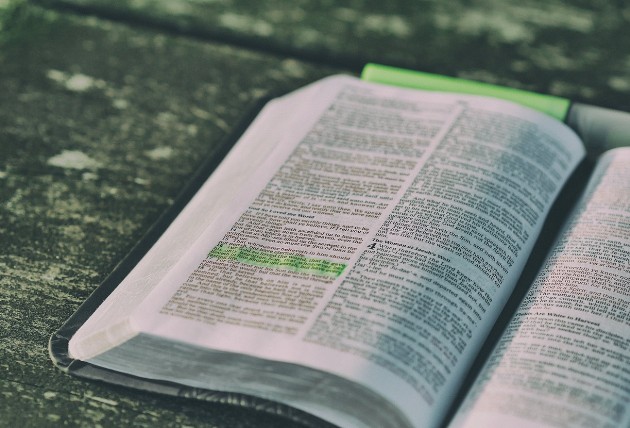About Us

Anvil and The Cross
The meaning of the Cross is obvious to anyone with faith in God and a knowledge of the Holy Bible and the Christian Church: the resurrection of our Lord and Savior Jesus Christ, the power of Salvation through Him, and the immeasurable grace of God that covers the sins of the world and empowers His people to be more than conquerors through Jesus Christ who strengthens us.
The Anvil, on the other hand, has a symbolic and a historical meaning which must be noted by all who call themselves African Methodist. OUR beginnings emerged from the depths of racism and bigotry and when our founding fathers chose to stay with Methodism they purchased a blacksmith's shop and converted it into their house of worship; they called it BETHEL, meaning "House of God." In the blacksmith's shop was an anvil used to pound and shape metal ores into a usable and functioning object. And, as any blacksmith will tell you, hammers may wear down, and many a man may loose his life to the exhaustion from the hard work of being a blacksmith, but the Anvil never fails. A man only need to purchase one in his or her entire lifetime, and it continues to last through MANY lifetimes. So it is with God; He cannot be beaten down and He is Eternal. The Anvil represents our beginning and the lasting Strength of our Lord and Savior that never ceases.
The Cross and the Anvil: Our Salvation and our Strength. Our beginnings in a blacksmith shop and our eternal ending in God's heavenly realm.
Our Beginnings
In the year of our Lord 1840, a group of God-fearing dedicated Christian men and women decided that there should be an Africian Methodist Episcopal Church in the Village of Tangipahoa, Louisiana. They began to worship under a bush arbor, two miles west of town. Rev. Charles Andrews was the pastor in charge currently. Some of the members who began this Christian journey were Bros. Alex Wilson, Ike Bickham, Ed Armstead, John Tate, Louis Pool, Jim Strickland and Sisters Nora Forster, Ella Tate, Francis Bickham and many others.
About 1849, the church moved to a three and a half acre donated by Mrs. Ora Lillie. A building was erected on this site, which later became the cemetery. Our records do not reflect who was in charge at this time. About 1864, the church was moved again and was in at the present site in the Village of Tangipahoa. During this period, it was pronounced that all churches in the AME Connection should be honored with a name. Rev. Quinn was serving as charge at that time, and with his congregation he built the first small frame building. Therefore, the church was named Quinn Church.
In 1938, tragedy struck Quinn Chapel! The beautiful old wood frame structure was destroyed by fire the congregation held its Sunday Worship Services in the Tangipahoa Colored School.
Three other churches were built to house Quinn’s Chapel Congregation since that time following the fire, and under the administration of Rev. S.T. Huston a new wood frame edifice was completed. Rev. Steward and Rev. Haughton served as pastors at this time and the Rev. Whitfield was our Presiding Elder.
The first brick building was constructed in 1965 by Rev. T.H. Terry, Rev. Elijah Nelson and Rev. Johnson served as Presiding Elders. Some of the ministers that pastored Quinn Chapel were:
Rev. Forster, Rev. Paul Exkano, Rev. Lorenzo Clark, Rev. Robert S. Hall, Rev. Otis S. Lewis, Rev. Nelson Taylor, Rev. Joseph Pitts,
Rev. Herbert Spears, Rev. Bernard Gibson and Rev. Nathaniel Cyprian.
Under the leadership of Rev. Nathaniel Cyprian our current edifice was erected. He served one year after the completion of our church. Rev. Lawrence Morris Sr. answered the call to preach under his leadership. The Rev. D.J. Campbell Jr. served as Presiding Elder of the New Orleans Greensburg District.
Rev. Marshall Holiday Jr. was appointed to Quinn Chapel in November 1997 and served thirteen years. During his administration the church was recapitalized for a lower rate, and a large neon sign was purchased. He designated the fourth Sunday in June as the permanent date for our Homecoming celebration he helped in starting the Summer Feeding Food Service Program at our church for the community.
Under his leadership Rev. Frances Cook, Itinerate Elder, Rev. Mary Vernon and Local Deacon Rev. Emma Cohn-Allen through his leadership became ordained in the Louisiana Conference. Rev. Holiday retired October 2010, after thirteen years of service and preached the opening worship service, his final sermon as an appointed pastor accompanied by Quinn Chapel Senior Choir in the Louisiana Annual Conference at Allen Chapel Baton Rouge, La.
Rev. Russell Obee was appointed to Quinn Chapel October 2010. Under his administration Rev. Elsie Smith became an Itinerate Elder. Our church was paid off. Although Rev. Obee was here for a short time. Rev Obee and members purchased a 15-passenger van for the church, a computer and financial software was donated.
Before the conference year ended, Rev. Obee was appointed in April 2014, to his home church in New Orleans Louisiana. Rev. Marshall Holiday Jr and Rev. Otis S. Lewis became our pastors until the Annual Conference was held in November 2014. Rev. Lewis served as Presiding Elder and Rt. Rev. Carolyn Guidry was Bishop of the Louisiana Conference.
Rev. Troy T. Grimes was appointed to Quinn Chapel. He has been instrumental in helping to restore our church due to a flood in 2016. Under his administration the church underwent major changes. The interior was restored with new carpet, pews, pulpit furniture sound and security systems and new computer. A pavilion was also built as protection from the rain when entering the sanctuary.
Rev. Grimes has been an inspiration to our church and many people have joined under his administration. With his help in guiding us spiritually there are no boundaries in which we are held by.


APOSTLE'S CREED
I believe in God the Father Almighty, Maker of heaven and earth, and in Jesus Christ his only son our Lord who was conceived by the Holy Spirit, born of the Virgin Mary, suffered under Pontius Pilate, was crucified, dead; and buried. The third day he arose from the dead’ he ascended into heaven and sitteth at the right hand of God the Father Almighty; from thence he shall come to judge the quick and the dead. I believe in the Holy Spirit, the Church Universal, the communion of saints, the forgiveness of sins, the resurrection of the body and the life everlasting. Amen

Twenty-Five Articles of Religion
Our Beliefs as Members of the African Methodist Episcopal Church are embodied in our Twenty Five Articles of Religion, which are found in DisciplineThe Doctrines and line of the African Methodist Episcopal Church and cannot be changed under any circumstances by the vote of the general Church.
We believe:
1. That there is one God who interacts with us as God the Father, who created all that is, God the Son, who saved us from our sins, and God the Holy Ghost, who lives in and directs the lives of all believers. The three persons of God are of one substance and always work for our well being.
2. That Jesus is the Christ (which in Greek means the Messiah or Anointed One) who came into this world born of a virgin as God in human form – the Word of God made flesh – to show us how to live and to save us from our sins by dying for us.
3. That Christ died on the Cross and arose from the dead in body and spirit three days later to guarantee us everlasting life.
4. That the Holy Ghost does not just anoint us in worship but guides and directs our daily living.
5. That sixty six canonical books of the Scriptures are sufficient in direction and instruction for our salvation as the inspired Word of the Lord recorded by humankind.
6. That the Old Testament is as essential for our salvation as is the New Testament. The Old Testament shows that we can’t save ourselves by our work and can only be saved by the Grace of the Lord Jesus Christ.
7. That all of us are heirs of Adam and inherited the tendencies to sin shown in the original sin of Adam.
8. That because we are heirs of original sin, we cannot exercise the free will to save our souls.
9. That we are justified not by our work, but by the saving Grace of the Lord Jesus Christ.
10. That the good works that we do spring from our faith in the Lord Jesus Christ and our willingness to walk in the Spirit of God.
11. That the idea of works of supererogation – works beyond what we need for salvation, is not relevant because the good that we do is offset by the bad that we do.
12. That, while we all sin after justification, we can be forgiven if we earnestly ask the Lord to forgive us.
13. That the church is not a building but is a congregation of the called out of God who come together for worship, sacramental sharing fellowship instruction, mutual support and service.
14. That there is no such place as purgatory.
15. That worship should always be done in a language that can be understood by the worshipers.
16. That there are two Sacraments ordained by Christ – Baptism, because Christ submitted to Baptism, and The Lord’s Supper, because Christ instituted it so that we can remember His sacrifice.
17. That Baptism, regardless of the means, is an outward sign of an inner change, and that children of the church should be Baptized.
18. That the Lord’s Supper is our sacred way of remembering that the Body and Blood of Christ were offered for our salvation.
19. That all worshipers are entitled to the Lord’s Supper in both kinds – the bread and the beverage.
20. That the one oblation of Christ upon the cross was the sacrifice for our sins and that no other signs or symbols are needed as aids for our forgiveness or salvation.
21. That the marriage of ministers is appropriate and encouraged so that the clergy can be productive members of their families, communities and the family of believers.
22. That the rites and ceremonies of the church should be sufficiently standard to allow worshipers in any AME Church to find common ground, but flexible enough to allow for local custom and for the work of the Holy Spirit.
23. That the Rulers of the United States of America or of any country and their just laws are to be respected by the family of God.
24. That the goods of a Christian are gifts from God to the individual and not common property, but should be shared for the work of the church.
25. That the taking of oaths is permissible in a court of law, but that Christians should not swear vain and rash oaths that we can’t keep because of our human frailty.
To find out more about what we believe as AMEs, read Our Beliefs on the Official Website of the African Methodist Episcopal Church.Our Beliefs as Members of the African Methodist Episcopal Church are embodied in our Twenty Five Articles of Religion, which are found in DisciplineThe Doctrines and line of the African Methodist Episcopal Church and cannot be changed under any circumstances by the vote of the general Church.
Official Colors
The Basic Colors are White and Purple
White represents purity, that states which all christians constantly strive to achieve.
Purple represents Christ's Blood on the Cross
Upcoming Events
You can view all of Quinn's Upcoming Events here we would love for you to join us.

